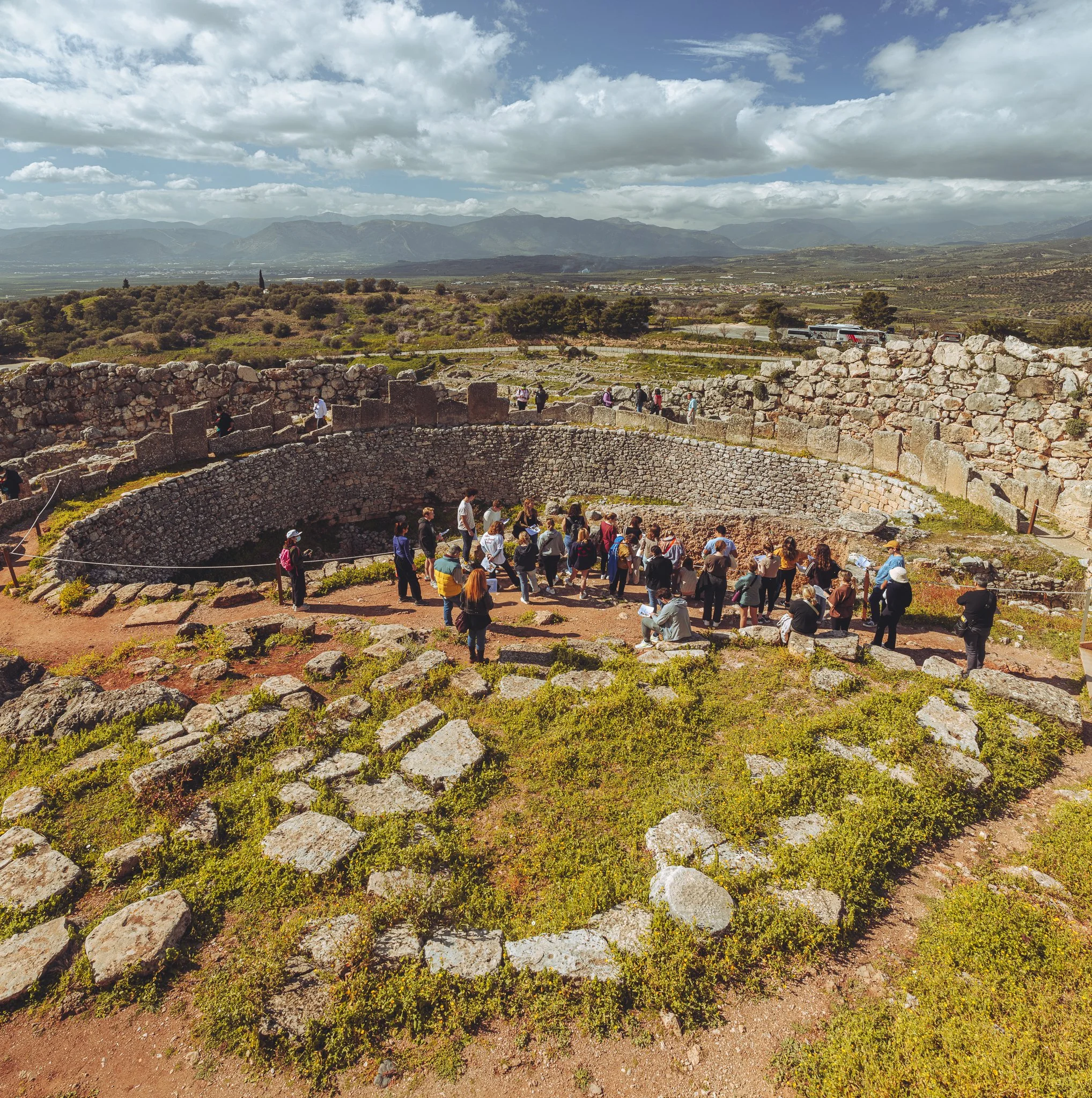Beauty around us / Mycenae
A GREAT LIST
Greece has the priviledge of having 25 properties in the UNESCO World Heritage List. One of these is the Archaeological Site of Mycenae.
And for many good reasons.
COPYCAT
I am copying from the site of the Ministry of Culture:
“Mycenae 'Rich in Gold', the kingdom of mythical Agamemnon, first sung by Homer in his epics, is the most important and richest palatial centre of the Late Bronze Age in Greece. Its name was given to one of the greatest civilizations of Greek prehistory, the Mycenaean civilization, while the myths related to its history have inspired poets and writers over many centuries, from the Homeric epics and the great tragedies of the Classical period to contemporary literary and artistic creation.”
(...)
“The site was first occupied in the seventh millennium BC (Neolithic period). Very little remains of this early settlement because of continuous re-occupation up until the historical period. Most of the monuments visible today were erected in the Late Bronze Age, between 1350 and 1200 BC, when the site was at its peak.”
(...)
“Pausanias (2, 16, 3) reports that Perseus named the new city Mycenae after the pommel (mykes) of his sword, which fell there, or after the Perseia spring, discovered there under the root of a mushroom (mykes).”
“The first great Greek powers were the Mycenaeans who were basically pirates at first: they sacked Phoenician boats, rammed Cretan ships, and soon had enough goods to go into business for themselves. Around 1500 BCE, they destroyed the Minoan civilization on Crete. Their stories describe this as a war with an evil king Minos who kept demanding that the Greeks deliver virgins to him every year until finally the great Greek hero Theseus went over and crushed the bastard and, just to salt the wound, made off with his (virgin) daughter. The Cretan version of this event would probably be different, if we but knew it.”
ANCIENT WATERS
In fact, the Perseus spring from prehistoric times to the present day still springs up and supplies water to the modern village!
There is a strange entrance in the northeast corner and towards the north cyclopean wall, which is actually the entrance to the underground reservoir, which provided water to the inhabitants when they were under siege. You can, with the help of a torch, still visit it today.
LANDSCAPERS
The site is another powerful proof of how well our ancient ancestors studied the places they chose to build their cities. We are located between two high conical hills, on another low hill that dominates the Argolic plain. From here, road and sea communications were easily controlled, removing the element of surprise from potential enemies.
This is were the greatest Greek king of the Mycenaean period, Agamemnon, lived and he was also buried here.
Unfortunately, in 2020 a fire passed through the archaeological site and burned the low vegetation and caused minor damage to the monument.
CYCLOPEAN SIZE
An impressive element of the site is, of course, the Cyclopean masonry (or cyclopean walls). The acropolis was protected by almost 30 acres (!) of walls, 4 to 10 metres high and 3 to 7 metres thick. No wonder the classical Greeks gave them that name, since they believed that only the mythical Cyclopes had the strength to lift the massive boulders that made up the Mycenae (and Tiryns) walls.
The scenery is beautiful, the architecture leaves you amazed and it is hard not to admire the ingenuity of the ancient Greeks. It is easy for the visitor to imagine the wealth that once existed in these lands.
A visit to the archaeological site and the adjacent museum is a nice experience.
Very close to Mycenae are countless attractions and one of the most beautiful cities in Greece, so I would recommend it to someone who wants to see something else, beyond Athens, if they have spare time.













































